
“From whence come wars and fightings among you? come they not hence, even of your lusts that war in your members? Ye lust, and have not: ye kill, and desire to have, and cannot obtain: ye fight and war...” —James 4:1-2
The End of the Great War,
November 11, 1918
 he leaders of the nations and armies of the First World War called for an Armistice at the 11th Hour of the 11th Day of the 11th Month in 1918. After four years of unprecedented industrial-scale slaughter, resulting in the deaths of about eight million soldiers, the Central Powers had had enough and agreed on the cease fire. The Allied leaders met at Versailles in France to determine the particulars of the post-war world. The United States had mobilized more than four million men after declaring war on Germany in April, 1917. About 110,000 Americans died in the conflict, including 40,000 from influenza. he leaders of the nations and armies of the First World War called for an Armistice at the 11th Hour of the 11th Day of the 11th Month in 1918. After four years of unprecedented industrial-scale slaughter, resulting in the deaths of about eight million soldiers, the Central Powers had had enough and agreed on the cease fire. The Allied leaders met at Versailles in France to determine the particulars of the post-war world. The United States had mobilized more than four million men after declaring war on Germany in April, 1917. About 110,000 Americans died in the conflict, including 40,000 from influenza.
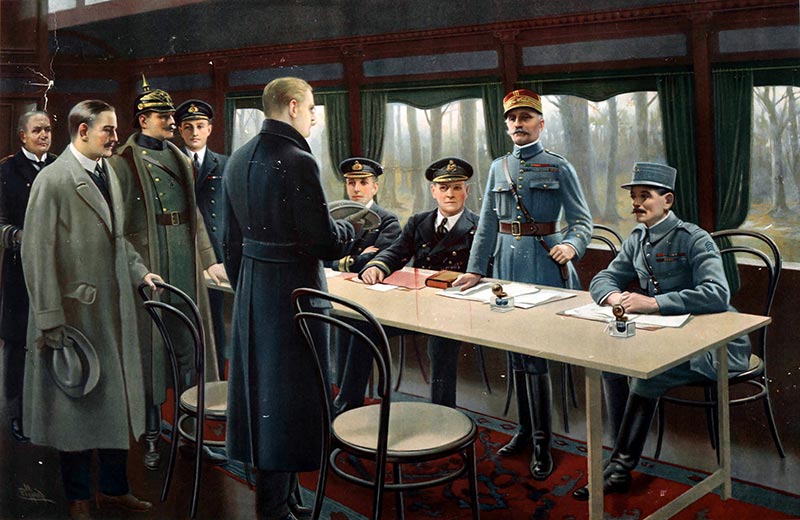
Depiction of the armistice signing aboard the private train of
French General Ferdinand Jean Marie Foch
One of the important books on the coming of the war was entitled The Long Fuse, a reference to the fact that this war, like most, was the consequence of a long series of events with a mixture of ideologies, national pride, greed for land, and other factors, used by Providence to bring about the fatal collision. The consolidation of the German states into one nation dominated by Prussia, and their rapid defeat of France in the war of 1870, had caused an unbridgeable animosity and distrust between those two nations; they both prepared for future conflict. The decline of the vigor of the Hapsburg Empire in Austria, yet its continued overlordship of the Balkan states, already known as the “powder keg of Europe,” presaged another war. A Pan-Slavic nationalism guaranteed that Russia would be involved if ever a major kerfuffle occurred in southern Europe. The weakness of the Turkish Ottoman Empire, “the sick man of Europe,” also set up international power plays in Europe and the Middle East.
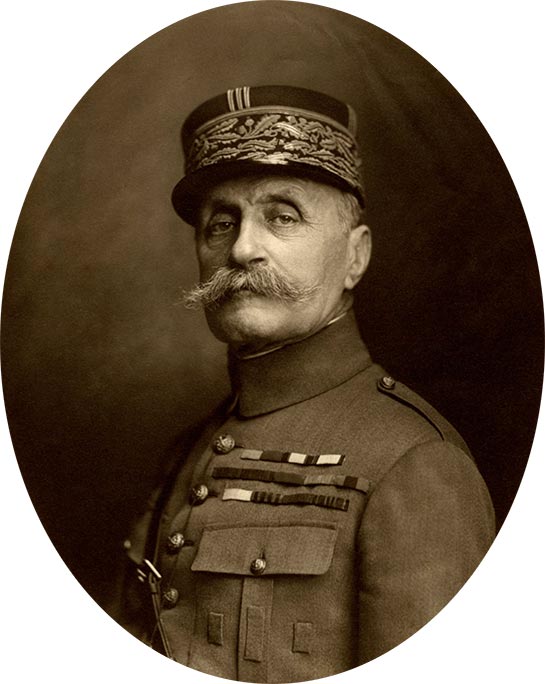
French General Ferdinand Foch ()
|
|
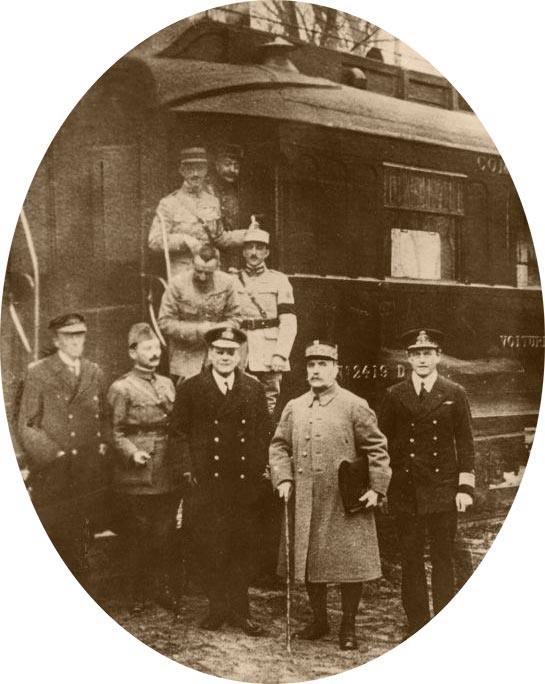
Photograph taken after reaching agreement for the armistice that ended World War I
|
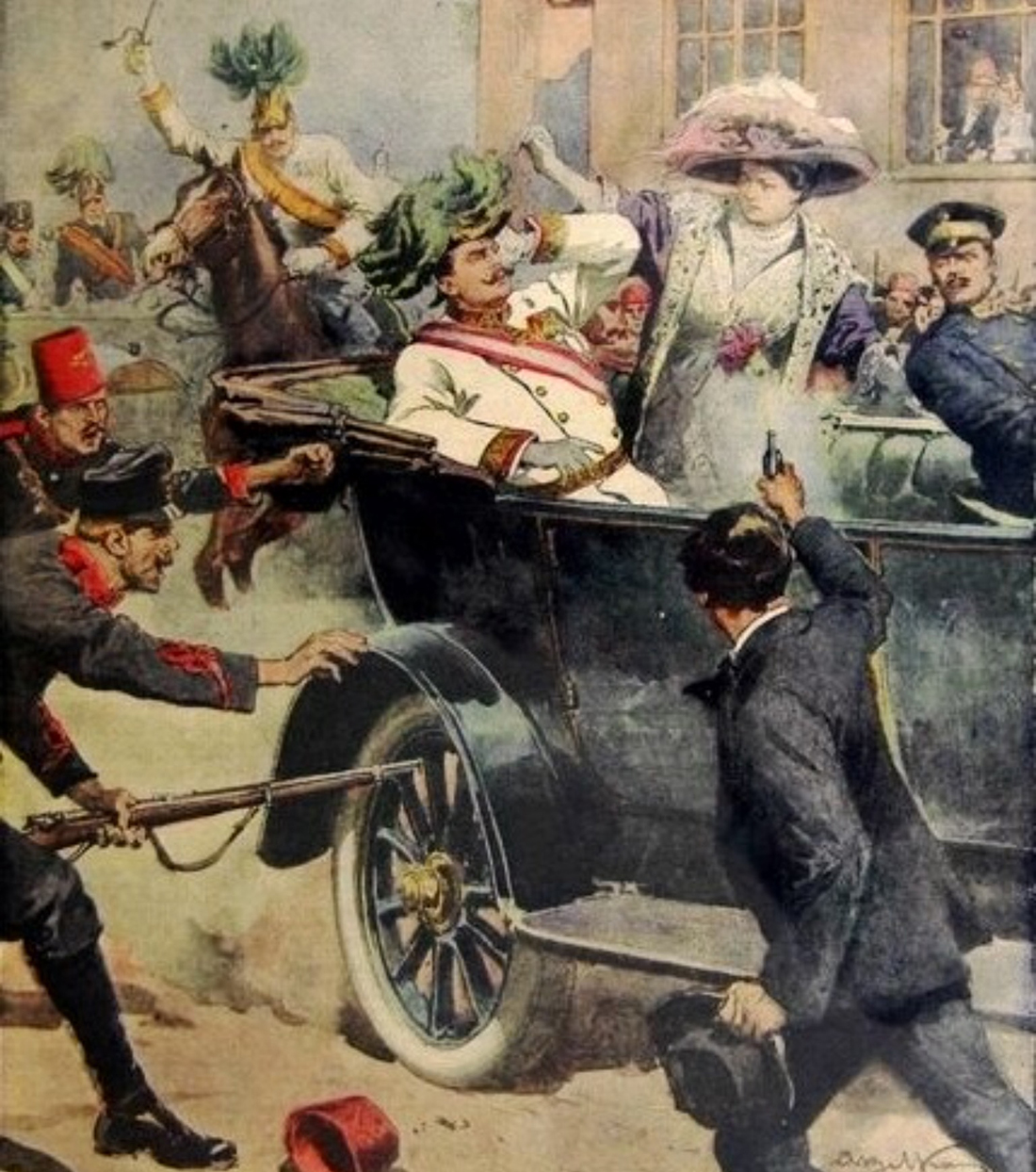
The assassination of Archduke Franz Ferdinand of Austria in Sarajevo by Gavrilo Princip
|
The assassination of the Archduke of Austria by a Serbian nationalist, in the city of Sarajevo, provided the match that ignited the political powder-keg. Germany, Austria-Hungary, and Turkey (the “Central Powers”) joined to defeat the Alliance of France, the United Kingdom, and Russia. Austria declared war first against Serbia; Russia responded in kind; Germany backed up Austria; and France threw down on Germany. The German attack through Belgium drew England and the British Expeditionary Forces into the Allied cause. And so continued the chain reaction of the nations until the United States eventually joined in two and half years later.
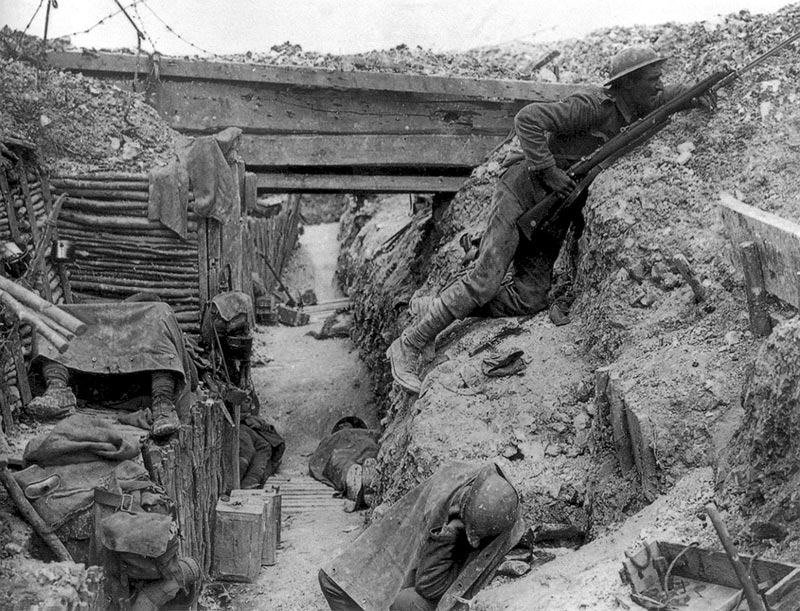
A German trench occupied by British Soldiers during the Battle of the Somme, 1916
France and England held the line in 1914 and both sides settled into trench warfare—dug-in multiple layers of lines stretching from the North Sea to the Alps. The war lurched from one stalemate to the next across Europe, with hundreds of thousands of casualties mowed down in “no-man’s land” by machine guns and artillery. The war extended to the Gallipoli Peninsula in Turkey and into the mountains of Italy. They fought in the Middle East, Africa, and the through the oceans of the world. It consumed entire armies of Russians, British Commonwealth soldiers (Australians, Canadians, New Zealanders, and Indians), and Europeans of every nation. Unrestricted submarine warfare drew the United States into the war, with President Woodrow Wilson calling it the war to preserve democracy and civilization, after totally opposing U.S. entry since the beginning of the conflict, and being reelected on the slogan “he kept us out of war.” It was declared “the war to end all war.”
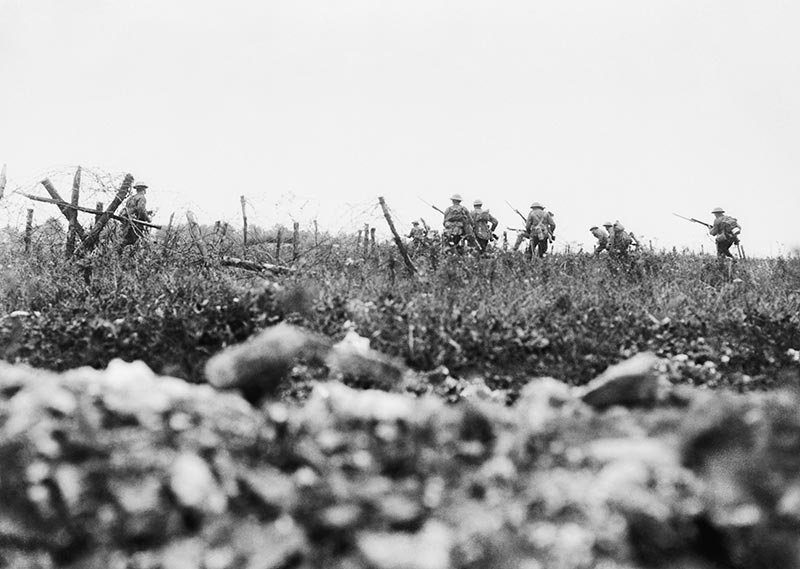
Men of the Wiltshire Regiment cross “No Man’s Land” during an attack near Thiepval, August 7, 1916 during the Battle of the Somme
On the very day of the armistice, soldiers still went over the top of their trenches a minute before the truce went into effect on that November day in 1918, killing a few hundred more to no purpose. The Armistice was followed by the Treaty of Versailles, in which the Allies redistributed German lands around the world and demanded punitive damages. The Germans faced revolution at home from Communist subversives and starvation of the civilian population by British blockade. The Kaiser went into exile and the great monarchies of Europe collapsed — Austria-Hungary, Russia, and Germany — and the Allies re-drew the map of the world. The First World War proved to be the greatest catastrophe since the Black Death of the Middle Ages, and laid the groundwork for the coming of an Austrian corporal named Adolph Hitler, to create a new party in the decade following, that would lead the world, once again, into a second world war; some would say, merely the extension of the First.
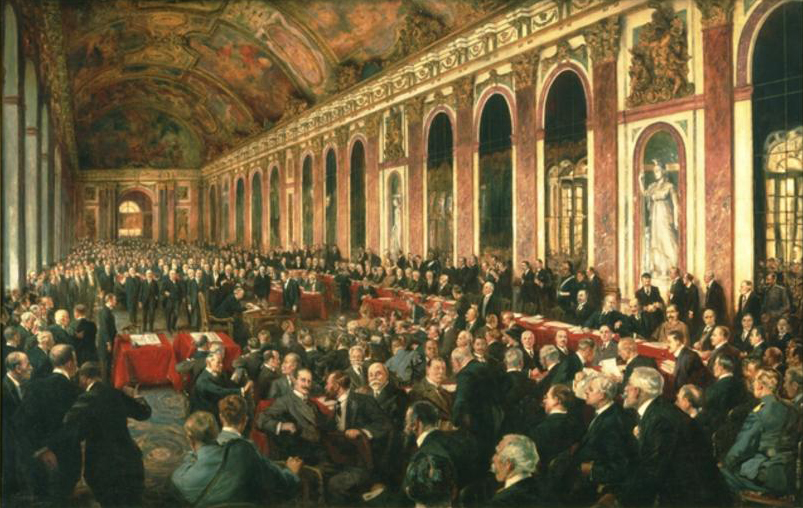
The Treaty of Versailles, signed June 28, 1919


1. 11th Month, 11th Day, 11th Hour, by Joseph Persico
2. The Great War in Modern Memory, by Paul Fussell

Image Credits:
1 Armistice Signing (Wikipedia.org)
2 Ferdinand Foch (Wikipedia.org)
3 After signing (Wikipedia.org)
4 Trench, Battle of the Somme (Wikipedia.org)
5 British attacking (Wikipedia.org)
6 Treaty of Versailles (Wikipedia.org)
|







